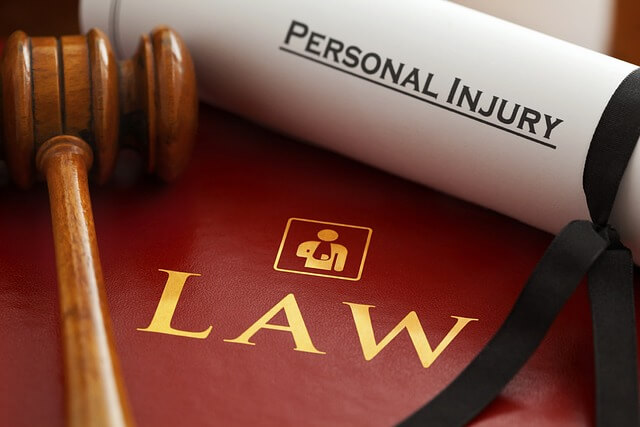Medical malpractice cases are the most complex and challenging to handle. The stakes are high — lives are affected, careers are on the line, and medical practices are scrutinized.
The role of a personal injury lawyer in such scenarios is multifaceted, requiring an in-depth understanding of medical intricacies, legal proficiency, and a sympathetic approach toward the affected individuals. If you have been affected by medical malpractice, contact a skilled medical malpractice lawyer in Detroit at Sommers, Schwartz, P.C.
The Initial Consultation
When a potential client enters a lawyer’s office with a medical malpractice claim, the first step is an in-depth consultation. This is not merely a formality; it is the cornerstone upon which the case is built. The lawyer listens intently to the client’s experience, collecting every detail that could shed light on the alleged incident.
This stage is critical for establishing a rapport with the client, understanding the nuances of the medical procedures involved, and assessing the claim’s viability. Lawyers often delve into the patient’s medical history, treatment plans, and the circumstances that led to the alleged malpractice. They must differentiate between an unfortunate medical outcome and a breach of the accepted standard of care.
Investigation and Evidence Gathering
Once the initial consultation is concluded and a case is deemed viable, the next step involves thorough investigation and evidence gathering. This phase is crucial as it lays the groundwork for the entire lawsuit. Lawyers scrutinize medical records, treatment documents, and any relevant correspondence between the patient and healthcare providers.
A personal injury lawyer often collaborates with medical professionals to obtain expert opinions on the standard of care that should have been provided. These medical reviews are indispensable in identifying deviations from accepted medical practices and pinpointing negligence.
Sommers Schwartz, P.C., a law firm in Detroit is well known for handling medical malpractice cases. They start with the premise that the investigation phase is about assembling a puzzle. Each piece of evidence, every medical record, and expert testimony must align to create a cohesive picture of negligence.
Filing the Lawsuit
With the investigation completed and sufficient evidence gathered, the lawyer files a formal complaint against the accused party. This legal document, known as a lawsuit, outlines the facts of the case, the alleged malpractice, and the damages sought.
Drafting the lawsuit requires precision and clarity. Lawyers must clearly articulate how the standard of care was breached and demonstrate the direct causation between the medical practitioner’s actions (or inactions) and the patient’s injuries. The complaint must be compelling enough to withstand the scrutiny of the court and defense rebuttals.
Discovery
Following the lawsuit’s filing, both parties engage in the discovery process — a legal mechanism where each side requests information and evidence from the other. This phase often involves depositions, where witnesses, including the accused medical professionals, are questioned under oath.
Through discovery, the personal injury lawyer works meticulously to uncover additional evidence that could support the case. This could include internal documents from the healthcare facility, testimonies from other medical staff, and any other material that sheds light on the incident.
Negotiations and Settlement
While the case proceeds through the legal system, there is often an opportunity for negotiation and settlement. Personal injury lawyers must balance the desire for a favorable outcome with the risks and uncertainties of a trial.
Settlements can be advantageous as they provide a quicker resolution and avoid the unpredictability of a jury verdict. However, personal injury lawyers must ensure that any settlement adequately compensates the client for their suffering, medical expenses, lost wages, and other damages.
Trial
If a settlement cannot be reached, the case moves to trial. Here, the personal injury lawyer presents the case with clarity and conviction, calling upon expert witnesses, presenting evidence, and cross-examining the defense’s witnesses.
The lawyer’s ability to simplify complex medical terms and procedures for the jury while maintaining the seriousness of the situation is paramount. The goal is to convincingly demonstrate that the medical professional’s negligence directly harmed the patient.
Post-Trial
Winning a verdict in favor of the plaintiff is a significant milestone, but the lawyer’s work doesn’t end there. The opposing party may file appeals, or there may be further negotiations regarding the awarded damages.
A personal injury lawyer also assists their client in navigating the aftermath of the case, ensuring they receive the compensation awarded and advising them on any additional legal or financial matters.
The Human Element
At the heart of a medical malpractice case is the human element. Personal injury lawyers must not only be adept in legal and medical knowledge but also exhibit compassion and understanding toward their clients. These cases often involve individuals who have suffered significant trauma, and their journey through the legal system can be daunting.
The personal injury lawyer’s role transcends legal advocacy. The attorney supports clients through the toughest times in their lives, providing legal representation, empathy, and reassurance.
Handling a medical malpractice lawsuit is like navigating a maze, where each turn means new challenges and complexities. Personal injury lawyers guide injured clients through this maze, ensuring justice is served and that those who have suffered due to medical negligence receive the redress they deserve.
